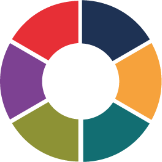Awareness of mental health and stress levels has risen sharply in recent years. We all know that high stress situations can adversely affect your health, and ultimately, can lead to burnout. But have you ever checked how ‘well’ your workplace is? Are any of your employees at risk of burning out?
Employees who feel highly stressed at work are three times more likely to leave their job than those less stressed. Stress makes decision-making and creative-thinking more difficult and can be the cause of absenteeism. All of these factors affect your business’ productivity and performance.
In an article in the Harvard Business Review, Leadership Consultant and Clinical Psychologist, Natalia Peart writes: “employers need to shift to organization-level approaches for reducing stress at work, ones that foster employee well-being while simultaneously improving business performance.”
Tips To Reduce Stress At Work
- Take regular breaks: sitting at a desk all day is not good practice. Encourage people to go for a walk, take their lunch break and get a change of environment.
- Set clear boundaries: ensure your team know what is expected of them, both during office hours and outside if necessary.
- Help people feel that their work is meaningful and appreciated. Employees who have a sense of purpose are more engaged, happier and productive than those who feel like cogs in a wheel.
- Facilitate flexible working: show understanding of your employees’ needs and adapt your working structures accordingly.
Do you know and understand your employees? Would you be able to predict which organisational changes would make the biggest impact on workplace wellness? For some employees, a more flexible structure may be a hugely positive move whereas somebody else may benefit from more clarity of objectives or one-to-one time. There is rarely a ‘one size fits all’ solution to problems within a team.
Investing in your vital resource – your staff – can make a huge impact on staff retention, engagement and performance. Understand their pain points, their motivations and how they perceive your organisation and you have valuable insights from which to make meaningful decisions. You may think that you are all on the same page, but the reality can be different and this often causes stress for employees.
If you can reduce stress levels, improve employee wellbeing and also increase business performance, it has to be a win-win situation. PCS can help you to diagnose the feelings within your organisation and help you to act upon them. Get in touch to find out more…


